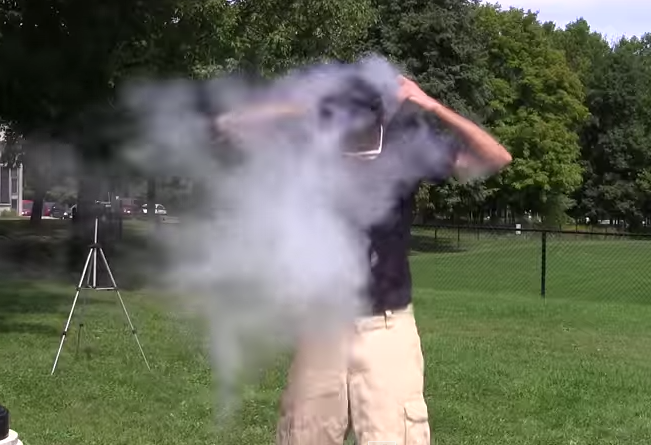As a trend, the ALS Ice Bucket Challenge seems a bit played out—who hasn’t yet dumped a bucket of icy water over his or her head for charity? But that didn’t stop Canadian chemist Muhammad Qureshi from executing his own sublimely nerdy, potentially dangerous variation on the theme: After donating to the ALS Association, he proceeded to douse himself with a bucket of liquid nitrogen. Anyone who’s taken a chemistry class, or at least watched the end of Terminator 2, knows that liquid nitrogen can rapidly freeze objects, leaving them brittle and prone to shattering. Pouring it on your skin can cause serious frostbite. So what prevented that bucketful of liquid nitrogen from transforming Qureshi into a popsicle? In two words: Leidenfrost effect. Click here to find chemistry-related jobs. The Leidenfrost effect, named after 18th century scientist Johann Gottlob Leidenfrost, is when a liquid comes near a mass that’s much warmer than the liquid’s boiling point, which (in the words of Princeton’s helpful physics explainer) results in an insulating vapor layer that “keeps that liquid from boiling rapidly.” In other words, the vapor makes the liquid “float” just above the surface of the object, rather than coming into direct contact with it. Given liquid nitrogen’s boiling point is -321 F, it’s a prime candidate for Leidenfrost effect, which is why Oureshi assumed he’d be safe (so long as the liquid nitrogen didn’t linger on his skin).
Upload Your ResumeEmployers want candidates like you. Upload your resume. Show them you're awesome.
As with all science-driven stunts, though, it’s better to leave this sort of thing to the professionals. If you’re doing the Ice Bucket Challenge, stick to old-fashioned H2O.
Related Articles
- Tech Titans Participate in #IceBucketChallenge
- Watch This Guy Survive a Fireworks Blast in a Metal Suit
- Watch Twitter’s Hilarious Recruitment Video
Image: Muhammad Qureshi



